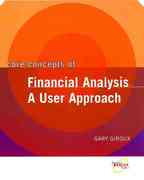Question
1. In 2017 Arnold invests $80,000 for a 20% limited partnership interest in a partnership in which he is not a material participant. He has
1.In 2017 Arnold invests $80,000 for a 20% limited partnership interest in a partnership in which he is not a material participant. He has no other income besides his employee compensation. The partnership incurs a 2017 loss, with $100,000 being Arnold's share. Which of the following statements is incorrect?
a.Since Arnold has only $80,000 of capital at risk, the at-risk provisions disallow the deduction of $20,000 of the loss.
b.Arnold's losses suspended by the at-risk and passive activity loss provisions can be carried over and used in future years against passive activity, active and portfolio income.
c.If Arnold has taxable income of $40,000 from the partnership in 2018 and there are no other transactions that affect his at-risk amount or passive activity status, he can use $40,000 of the suspended losses carried over from 2018 against that income.
d.Arnold's $100,000 loss is entirely nondeductible in 2017 because of the at-risk and passive activity loss provisions.
e.None of the above statements is incorrect.
2.Josh has investments in two passive activities. Activity A (acquired three years ago) produced tax losses totaling $40,000 in prior years and produces taxable income of $30,000 this year, while Activity B (acquired this year) has produced taxable income of $10,000 through the end of this year. Assuming no at-risk limitations apply, what is the total amount of Josh's suspended losses at the end of this year?
a.$0
b.$10,000
c.$20,000
d.$40,000
e.$60,000
3.White Corporation, is a closely held C corporation but not a personal service corporation. In 2018, White Corporation has $150,000 of passive activity losses, $120,000 of active business income, and $30,000 of portfolio income. The at-risk limitations do not affect the deductibility of the loss. How much of the passive activity loss can White Corporation deduct in 2018?
a.$0
b.$30,000
c.$120,000
d.$150,000
e.None of the above
4.Rick, a computer consultant, owns one separate business (not real estate) in which he participates. He has only one employee who works in the business. No one else works in the business.Which of the following is incorrect regarding that business?
a.If Rick participates for 400 hours and the employee participates for 420 hours during the year, Rick qualifies as a material participant.
b.If Rick participates for 550 hours and the employee participates for 2,000 hours during the year, Rick qualifies as a material participant.
c.If Rick participates for 120 hours and the employee participates for 120 hours during the year, Rick qualifies as a material participant.
d.If Rick participates for 95 hours and the employee does not participate at all during the year, Rick qualifies as a material participant.
e.All of the above are correct.
5.Maria, who owns a 50% interest in a partnership operating a restaurant, had been a material participant in the restaurant activity for 20 years. She retired from working at the restaurant at the end of last year and no longer participates in the restaurant activity. She is also a 50% partner in a retail store business in whose operations she has never participated. The retail store operations produce a loss for the current year, and Maria's share of the loss is $80,000. Her share of the income from the restaurant is $150,000. She does not own interests in any other activities and her only other source of income or loss is $15,000 in interest from bonds she owns.
a.Maria can deduct the $15,000 of the loss from the retail store against the $15,000 in interest income.
b.Maria can offset the $80,000 retail store loss against the $150,000 of restaurant income.
c.Maria will not be able to deduct any passive activity losses from the retail store against income of the restaurant until she has been retired and inactive in the restaurant business for at least six years.
d.Assuming Maria continues to hold the interest in the restaurant, she will always treat the income or losses as active.
e.None of the above.
Step by Step Solution
There are 3 Steps involved in it
Step: 1

Get Instant Access to Expert-Tailored Solutions
See step-by-step solutions with expert insights and AI powered tools for academic success
Step: 2

Step: 3

Ace Your Homework with AI
Get the answers you need in no time with our AI-driven, step-by-step assistance
Get Started


